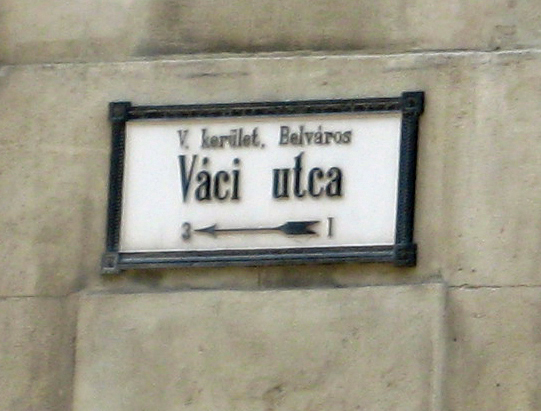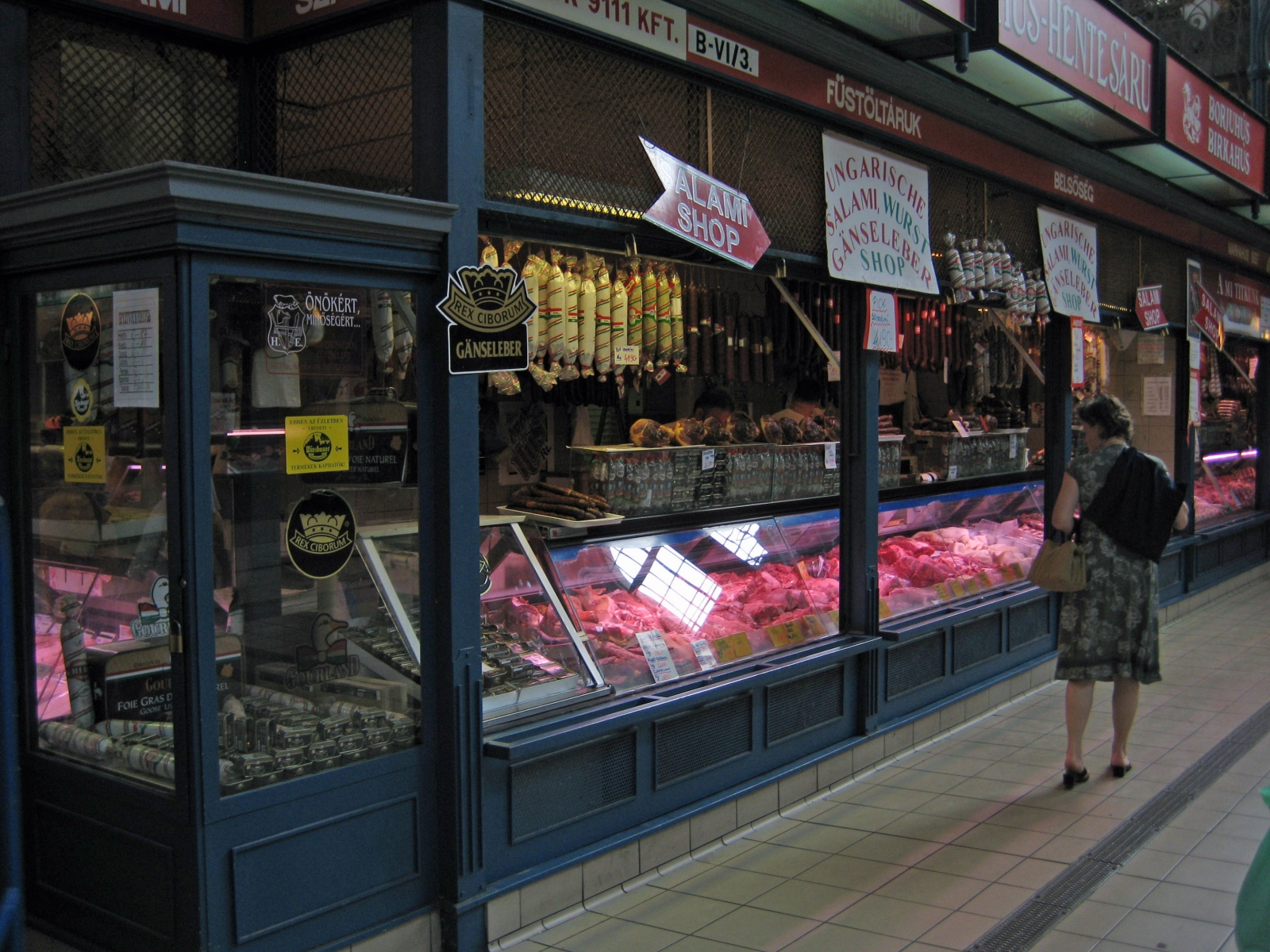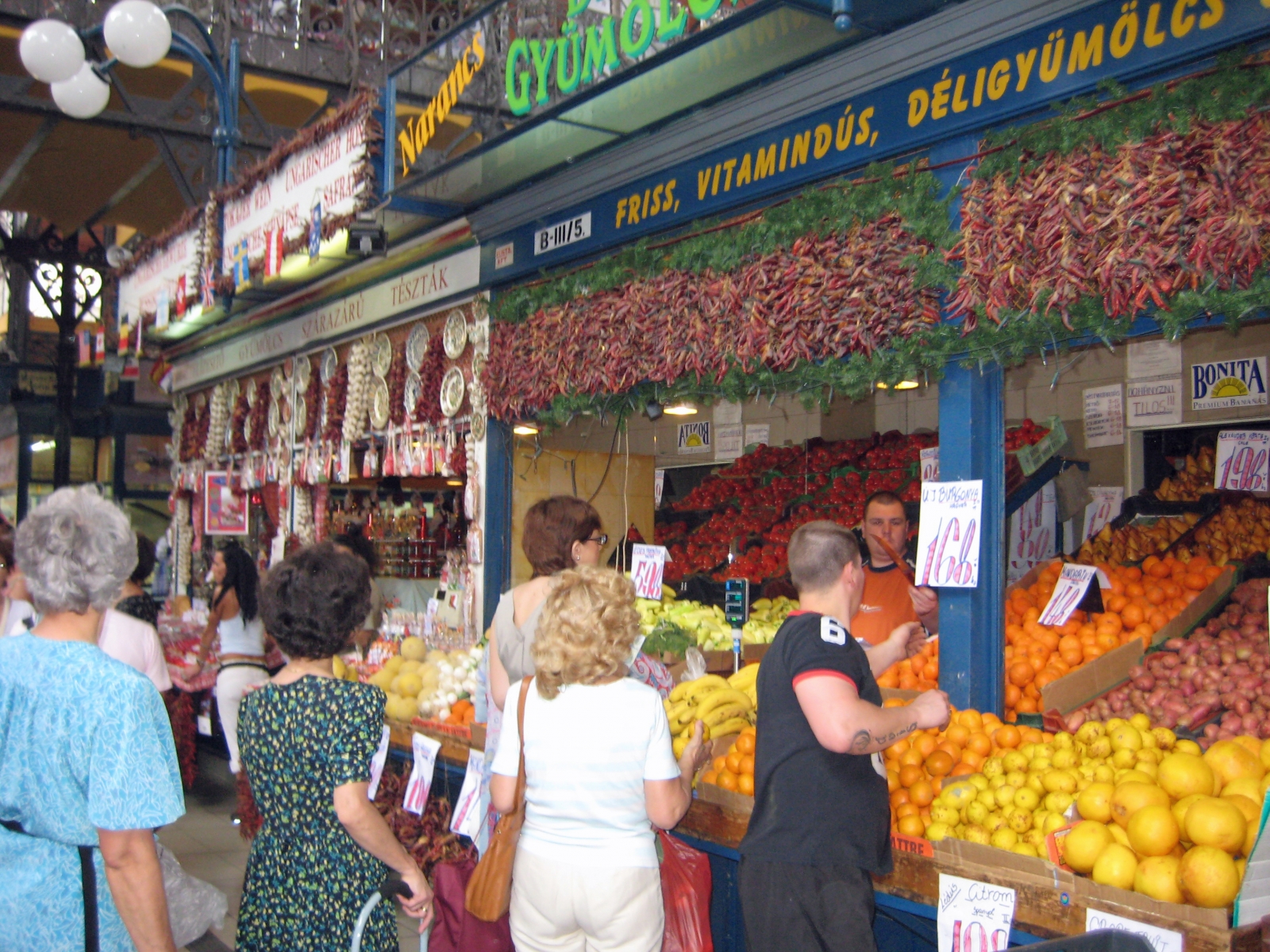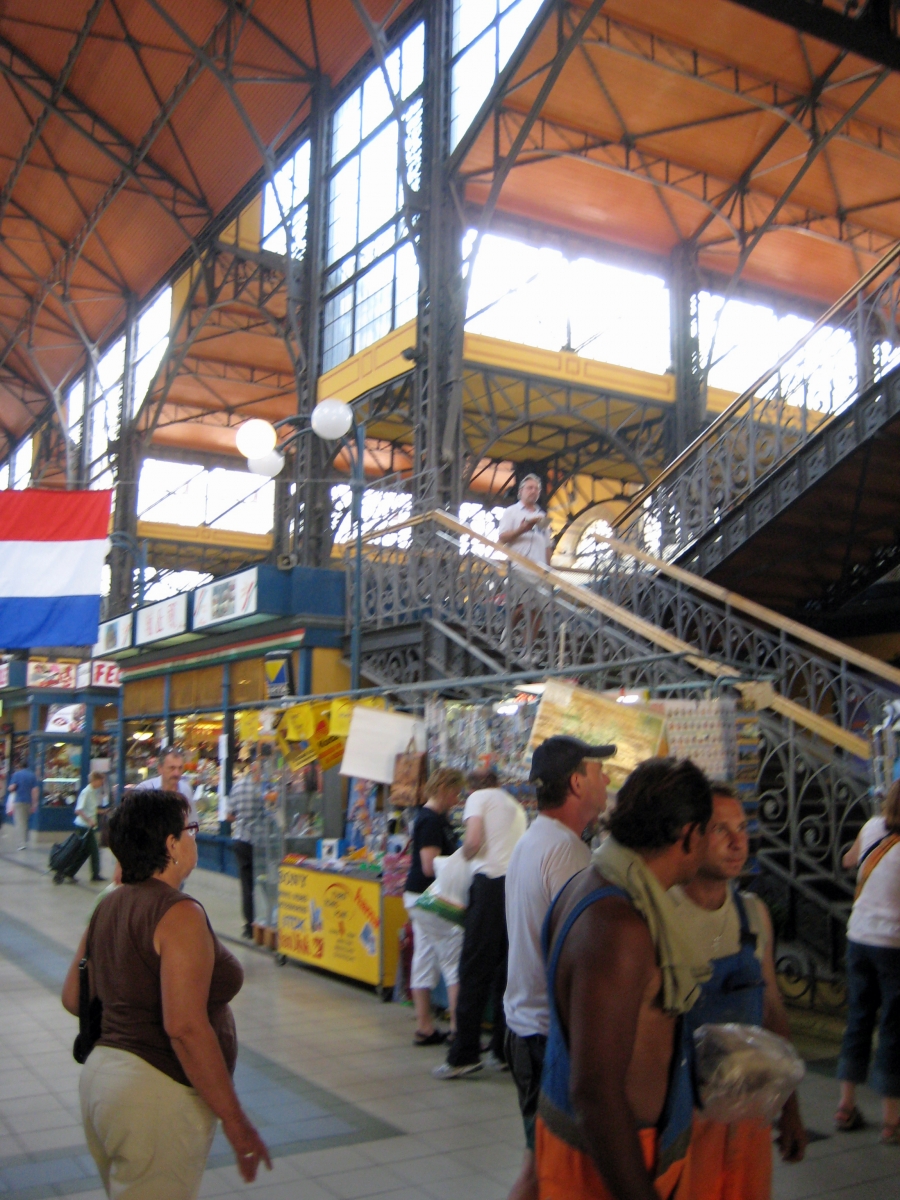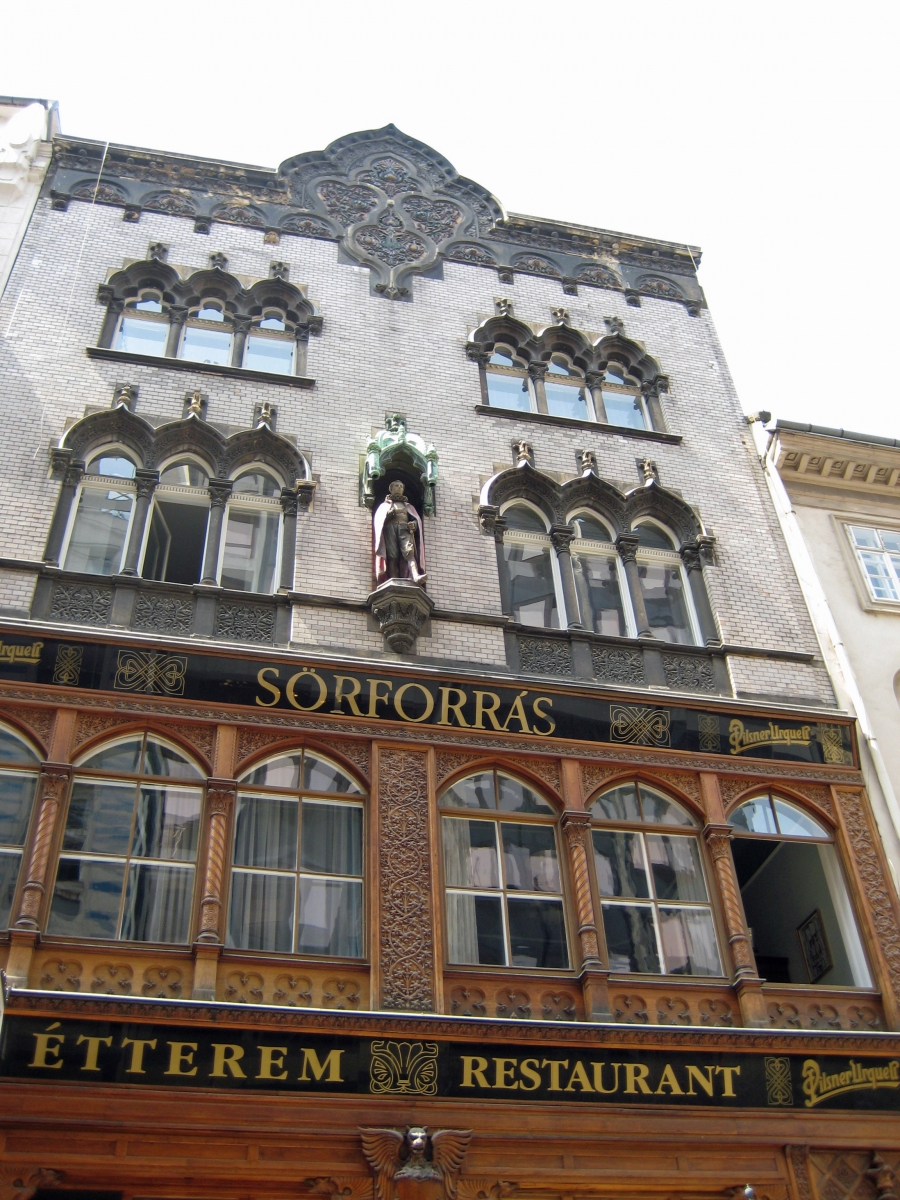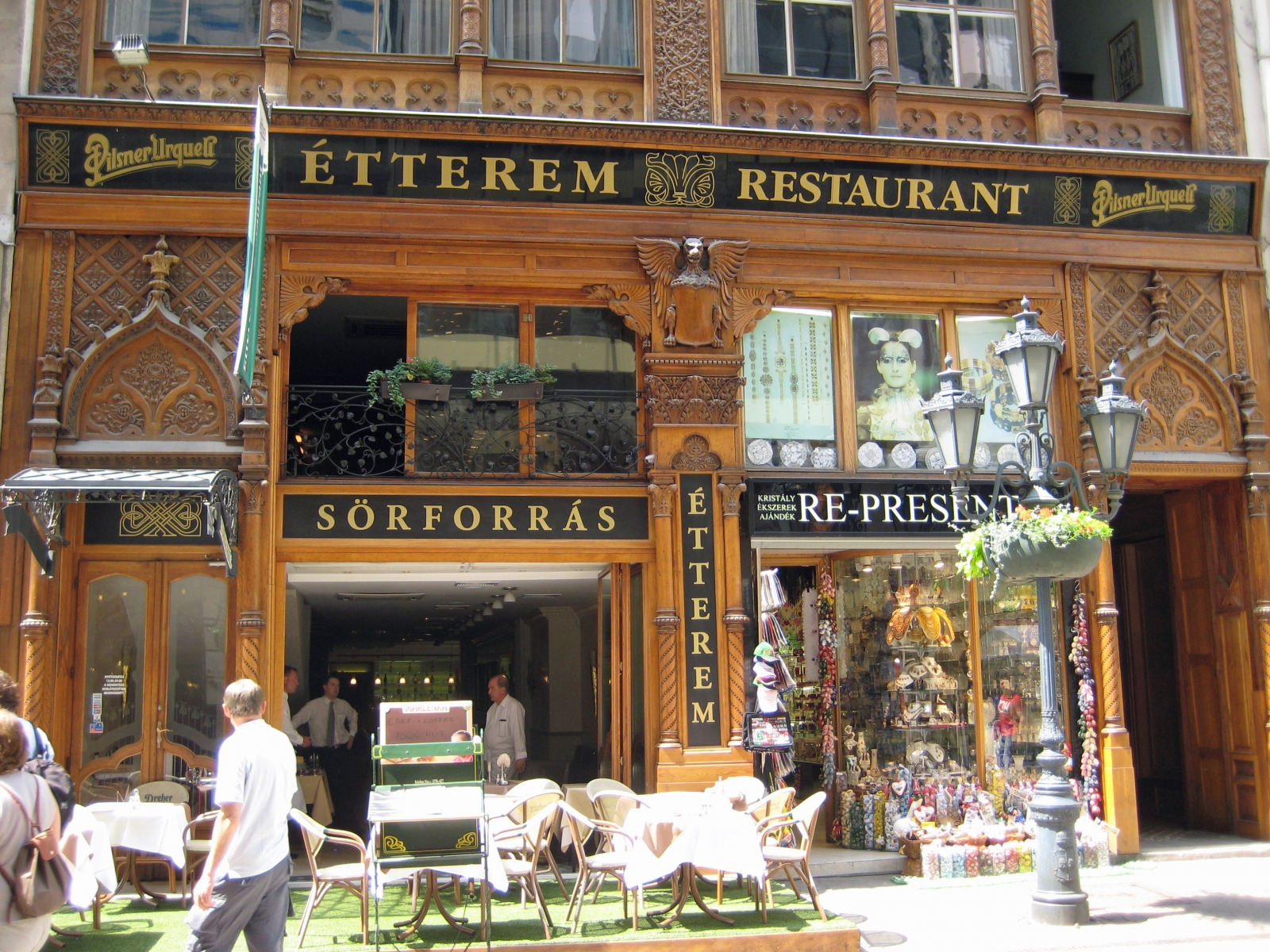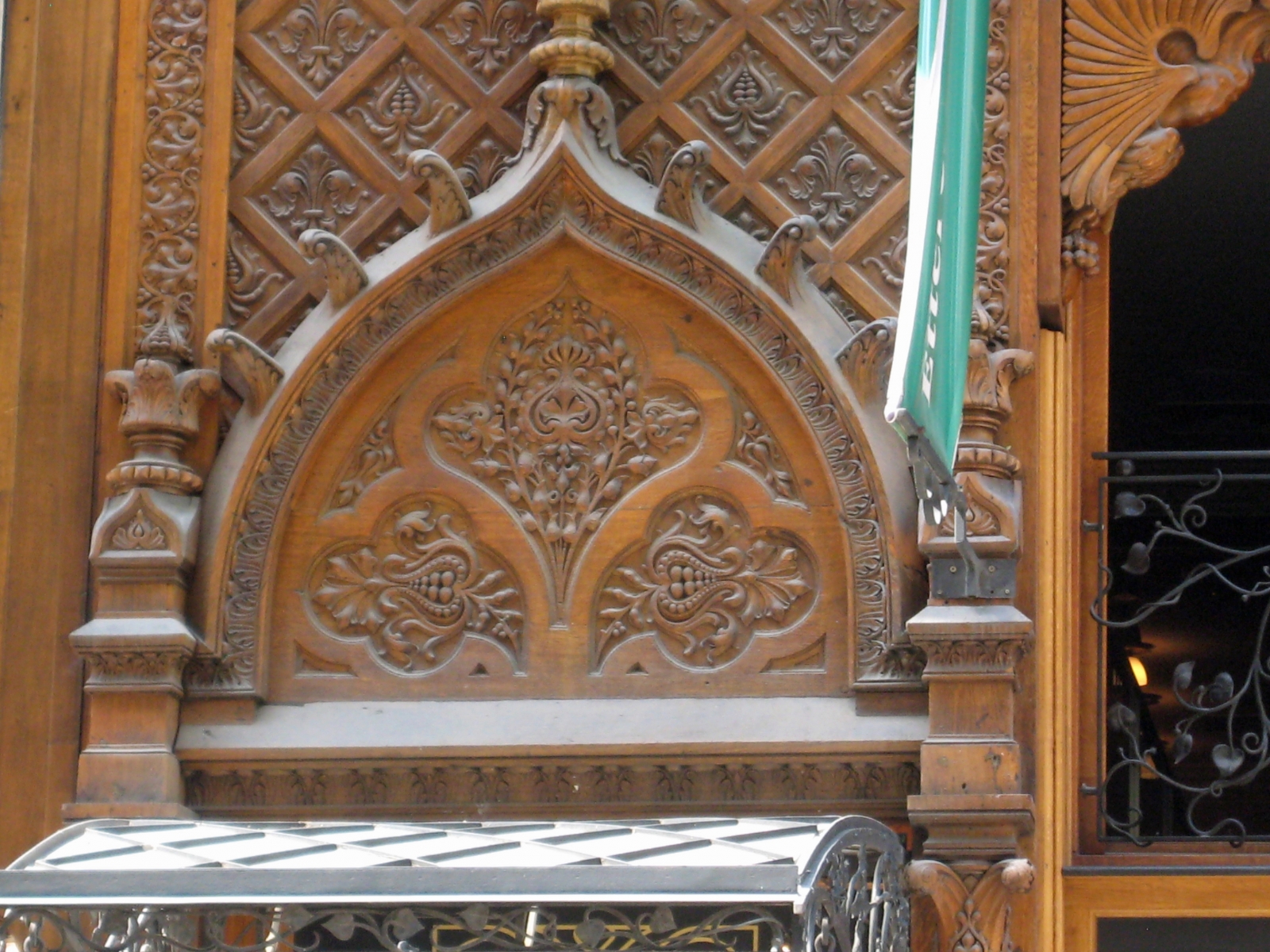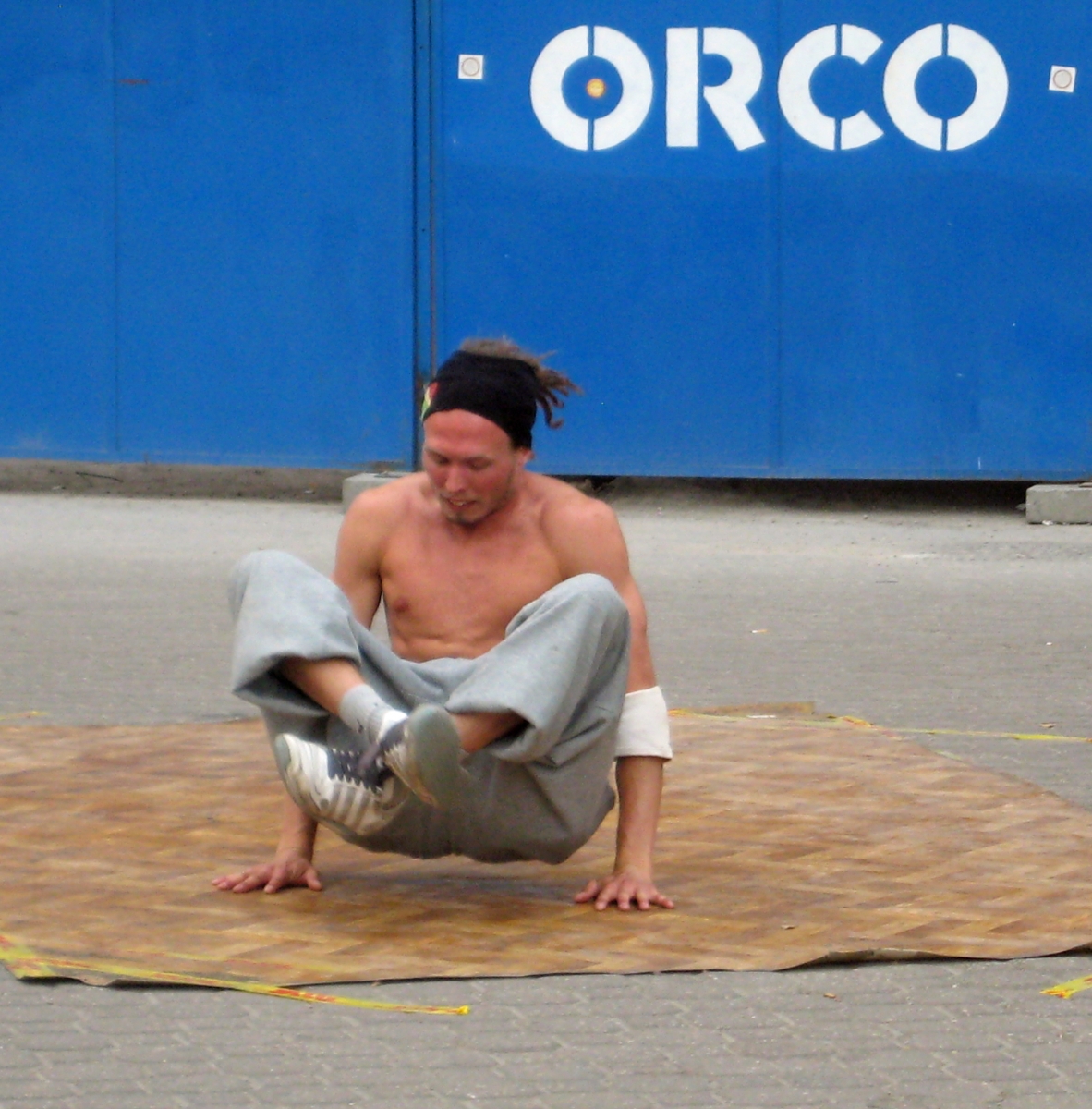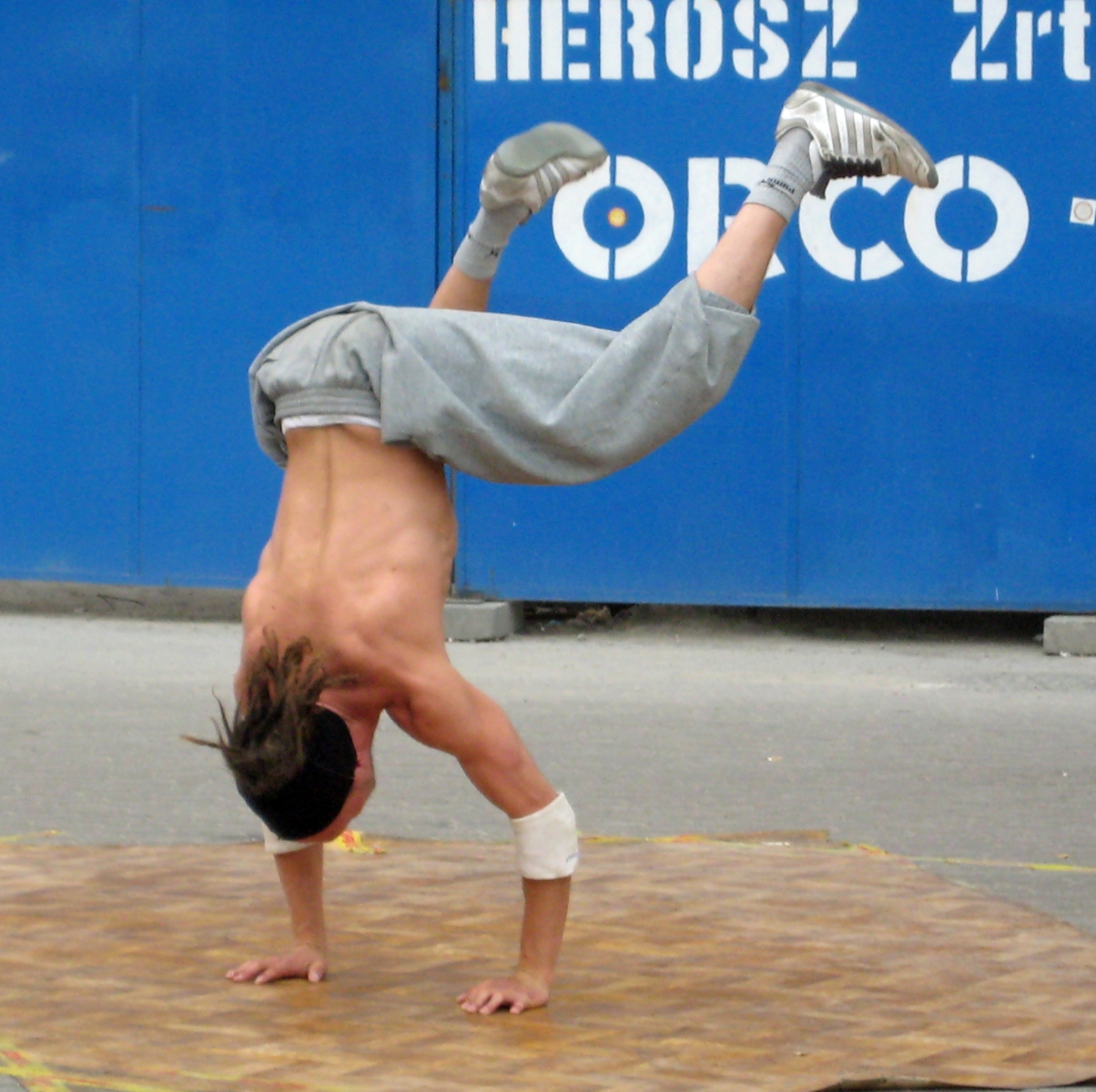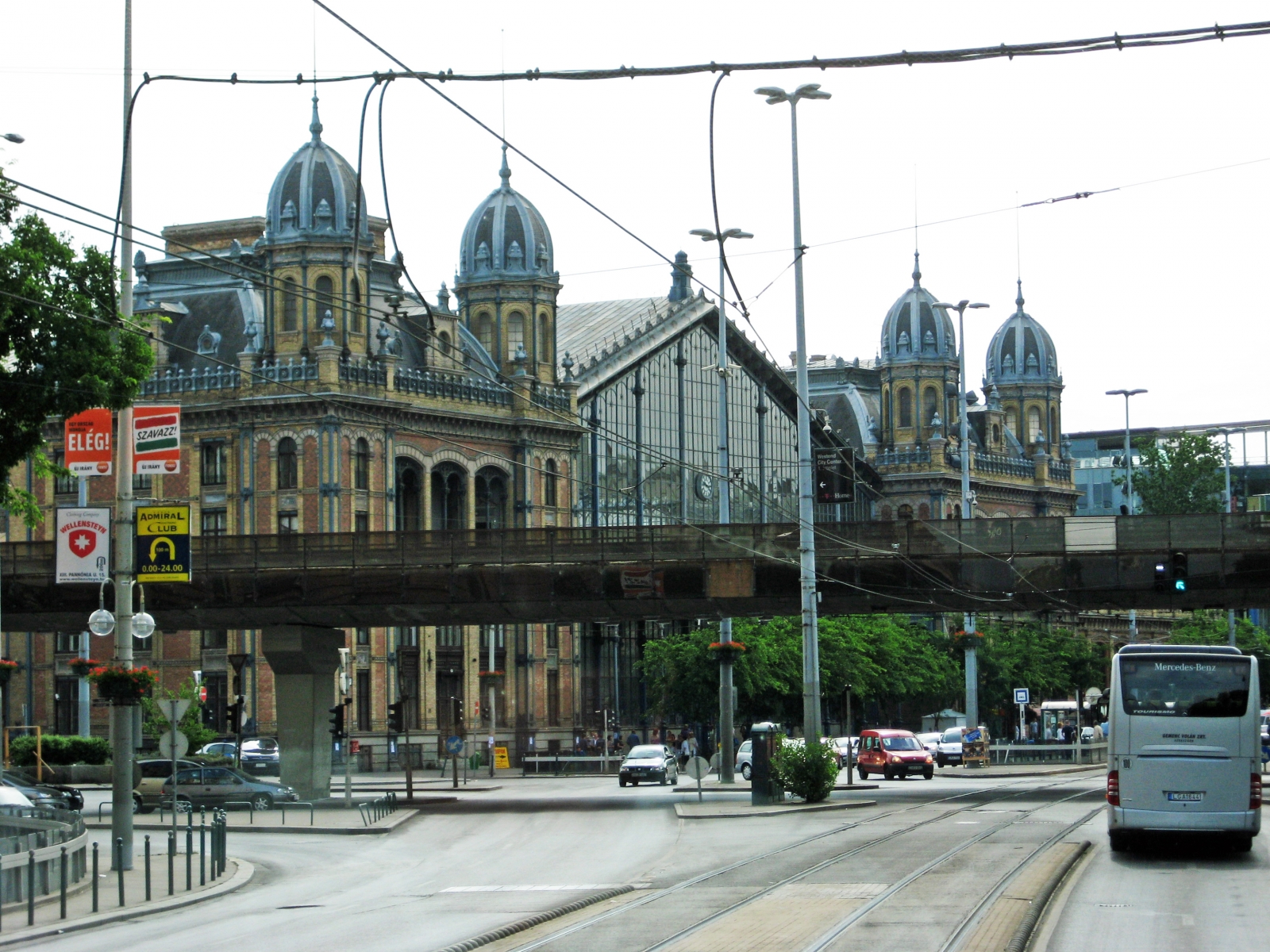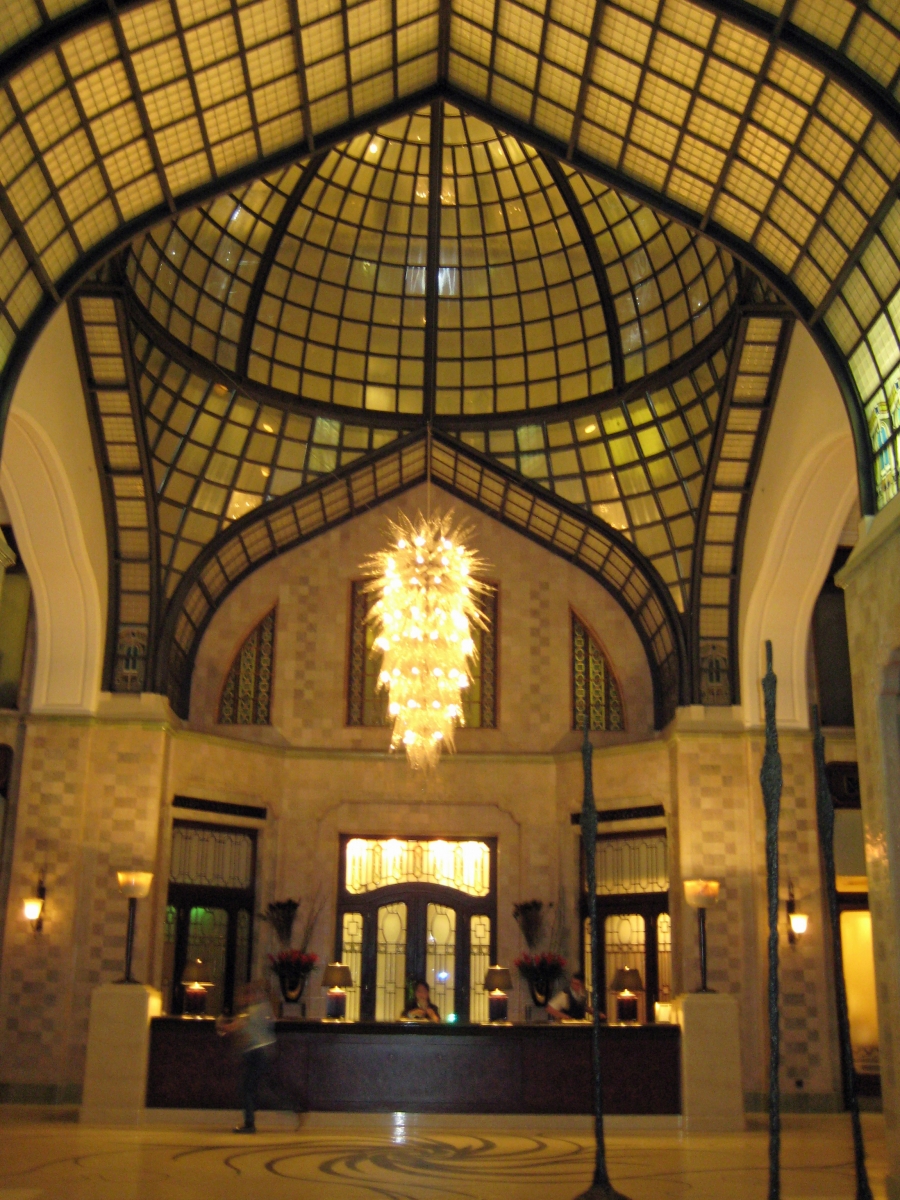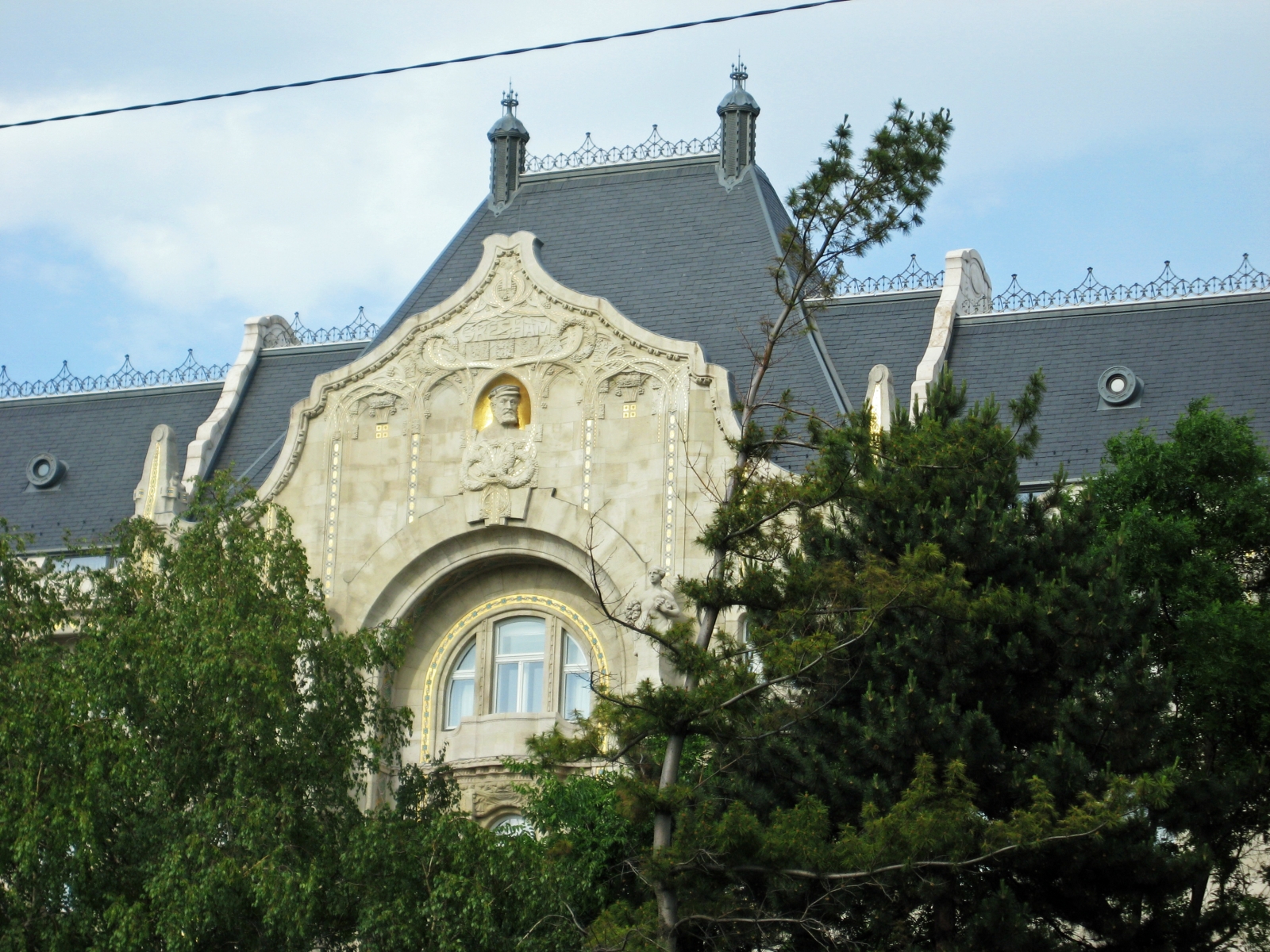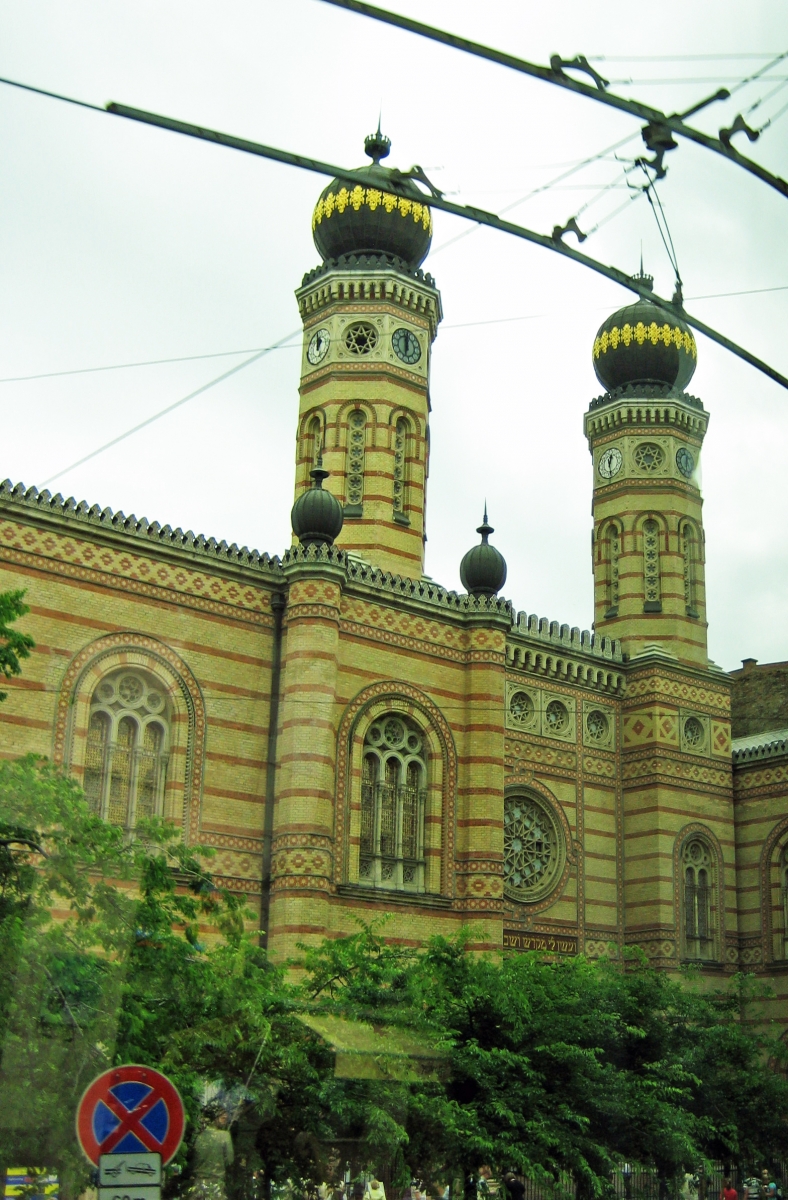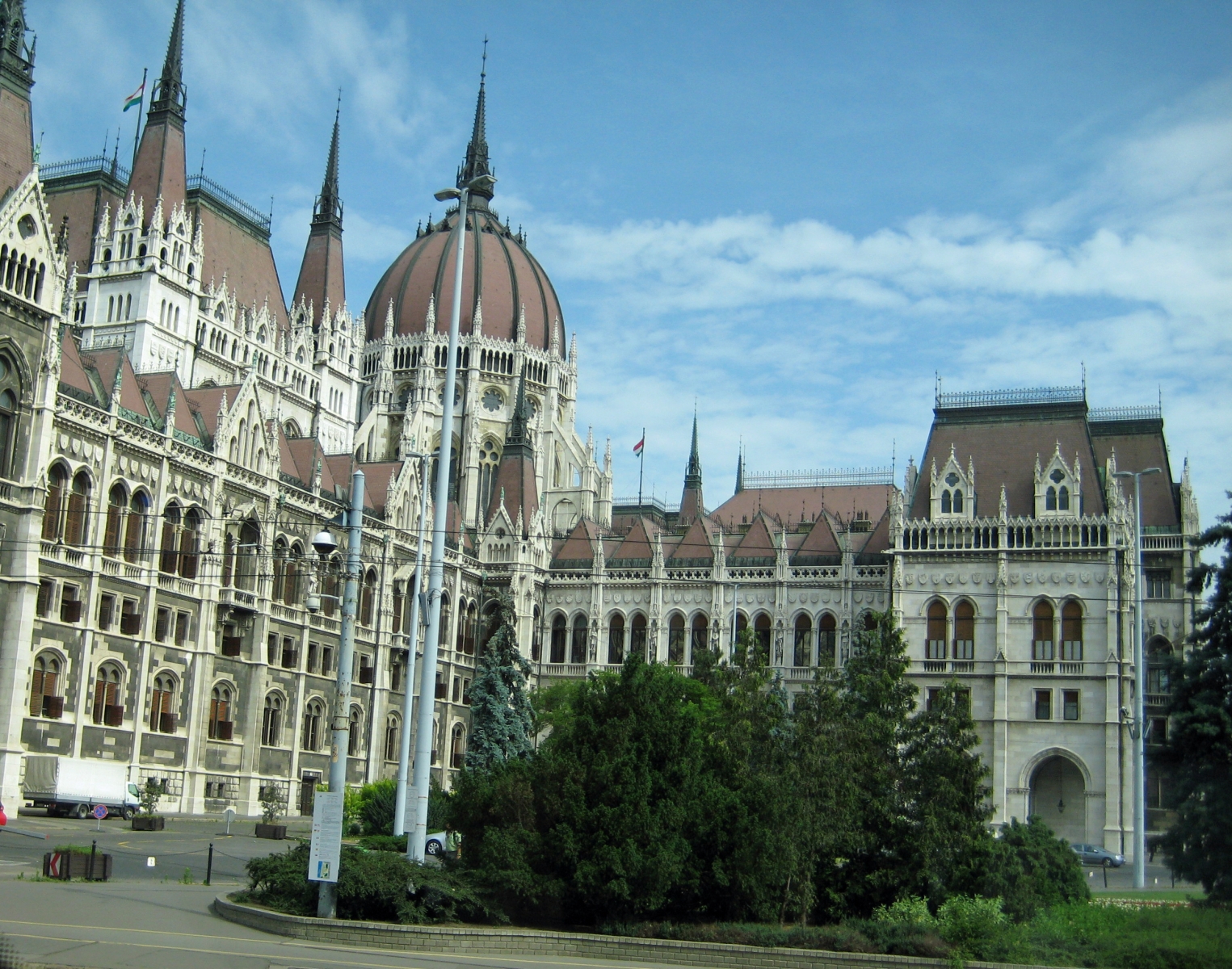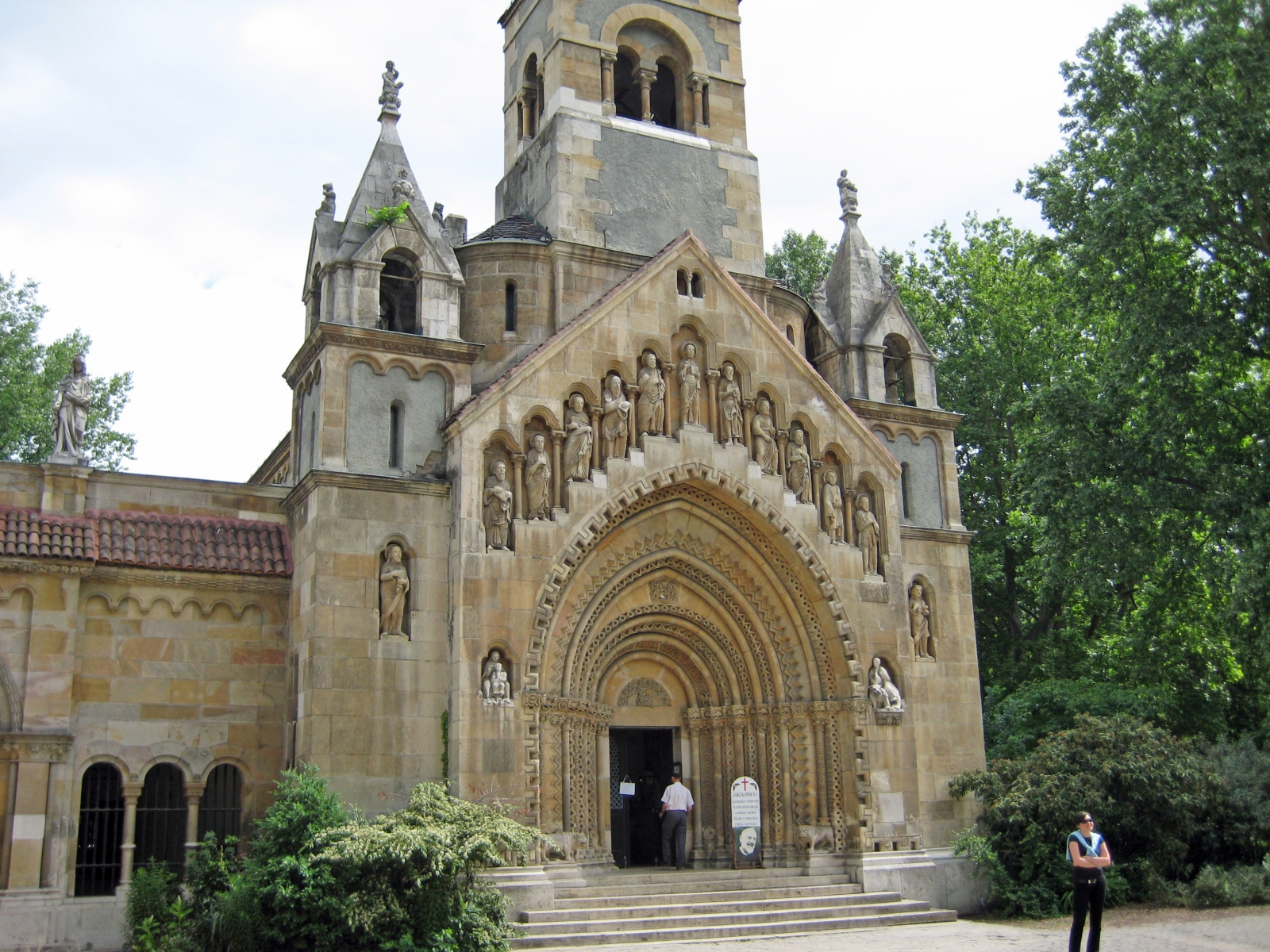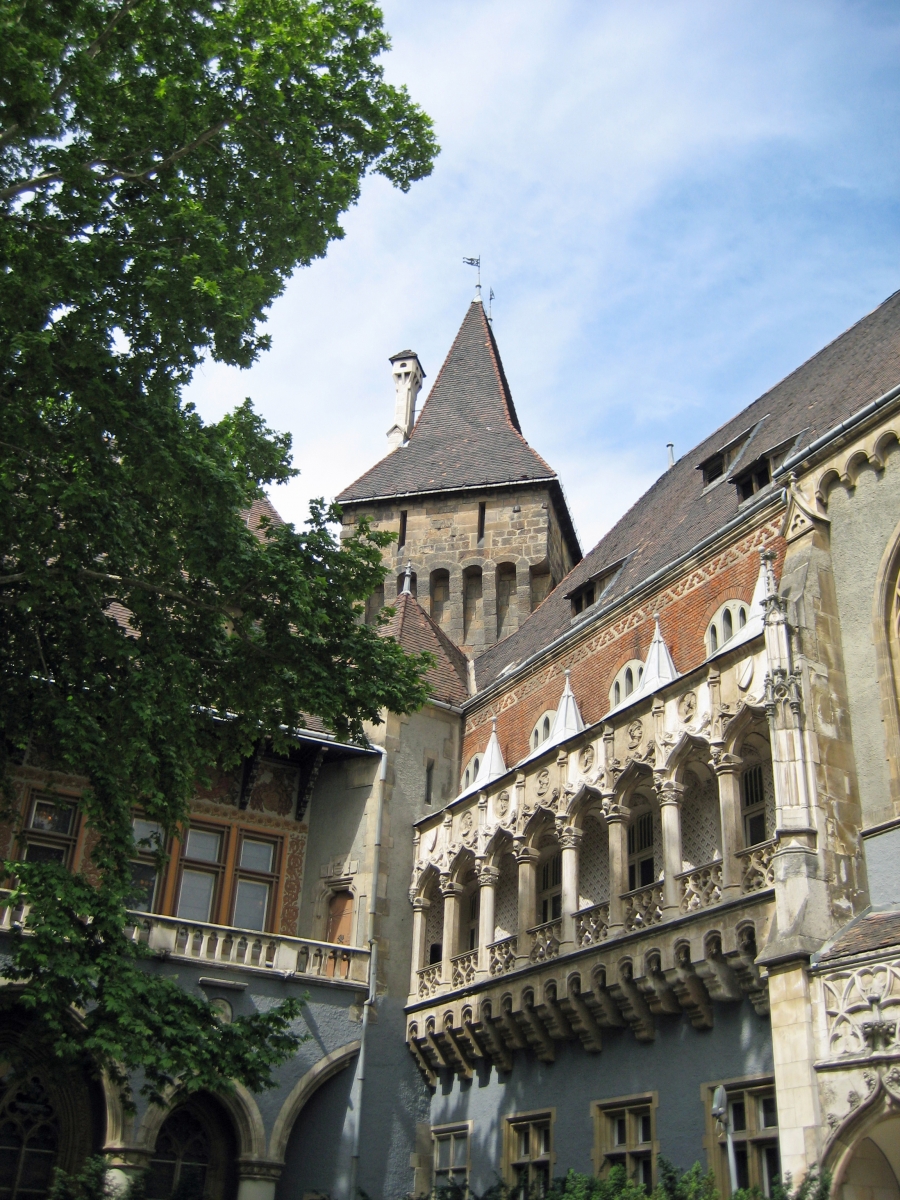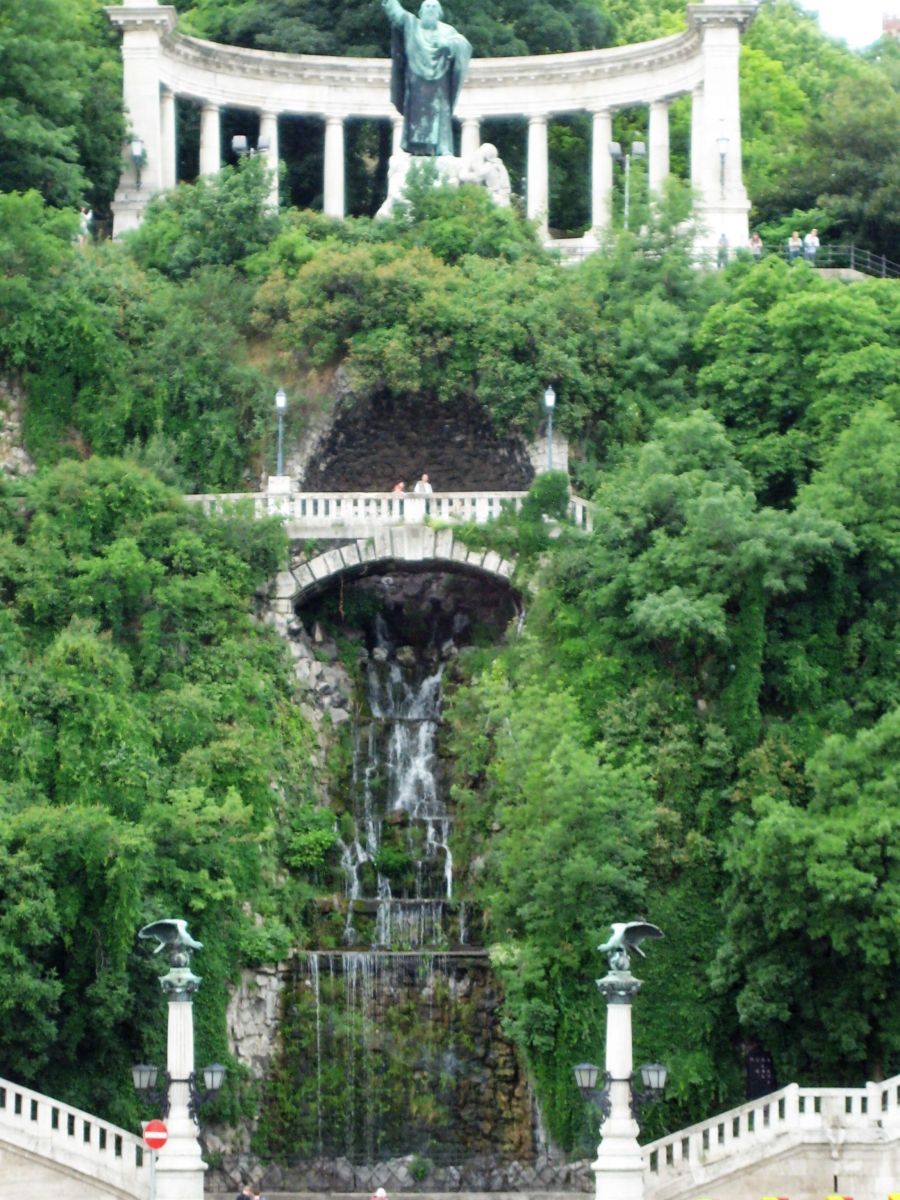One of my favorite walks from our hotel was along the pedestrian only Vaci utca. It's a popular street, as you can imagine, with shops, restaurants, places to rest and people watch. The latter an activity performed the world over.
meats
My focus was finding some pastry stalls, which we did, but since my stomach was the boss I neglected to get any photos of the baked goods or shop once we found them!
Like many farmers' markets in cities throughout Europe this one had great iron structures and glass ceilings to let in natural light.
My favorite building along the way though was the building that held the Sorforras restaurant.
The wood carvings were exquisite. Do you see the stylized pomegranates?
There were not a lot of street performers, but at Erzsebet Square we did come across a couple of guys practicing their break dancing moves. Lots of workers and tourists were gathered in Erzsebet Square, the largest green area within the inner city, having coffees and their lunch.
If you follow my blog, by now you know I seem to have a fascination with ironwork whether on scrolled balconies or the skeleton of a building. A couple other buildings in Budapest that held me spellbound for a bit was the interior of the Four Seasons Hotel and the Western Railway Station.The Western Railway Station was built by the Eiffel Company of Paris, but interestingly it was completed in 1877, 12 years before the Eiffel Tower in Paris.
As a surprise one night my husband took me across Roosevelt Square (yes, named for our former President) to the Four Seasons Hotel for dinner. Once we arrived I wished we'd brought clothes to dress up to fit the ambiance. I took photos of the yummy interior before and after dinner, capturing the glass roof in sunlight and later lit up by lights.
Custom designed Preciosa chandelier
The Four Seasons Hotels saved Gresham Palace, built in 1906, as the World Wars and the Iron Curtain had nearly crippled it for the wrecking ball. It now stands as one of Budapest's crown jewels in my opinion.
view from Chain Bridge
Since I'm going to wrap up our Budapest visit in this post I'm not done yet...
Another interesting building is the Dohany Street Synagogue. It is the largest in Europe and the fifth largest in the world. Interestingly, according to Wikipedia: " The synagogue was built between 1854 and 1859 in the Moorish Revival style, with the decoration based chiefly on Islamic models from North Africa and medieval Spain. The synagogue's Viennese architect, Ludwig Forster, believed that no distinctly Jewish architecture could be identified, and thus chose 'architectural forms that have been used by oriental ethnic groups that are related to the Israelite people, and in particular the Arabs.'" Horrifically, at least 400,000 Hungarian Jews were murdered by the Nazis.
I shared a photo of the Parliament Building from the Pest side in this post where I think it shows off best with the Danube in the foreground, but these two show it closer up while being cleaned and restored. It is the largest building in Hungary.
It was done in Gothic Revival and is very similar in style to the Palace of Westminster, the Parliament building for the U.K. There are two identical meeting halls, but after WWII only one is used for the government. The other is used for tours at this time.
Finally, the strangest building we saw was the Castle of Vajdahunyad which was built for the Millennial Exhibition of 1896. It was designed by Ignac Alpar to feature copies of several important buildings in Hungary, especially Hunyad Castle in Transylvania (now part of Romania.) This meant it represented four styles of architecture! Romanesque, Gothic, Renaissance and Baroque!
Check out the birdhouse on the roof!
It was originally made of cardboard and wood, but it became so popular with the locals that it was rebuilt out of stone and brick. It mainly houses the Agriculture Museum today.
There is so much more to see and do in Budapest that some day, if we live long enough, we would like to go back. Although neither of us were up for the House of Terror or the Jewish museum this trip I would like to acknowledge and experience them. In 2006 the last wall of the ghetto was torn down.
I also did not get to take advantage of something Budapest is famous for: their thermal spas. Gellert Spa especially is on my list of must dos, but more than likely it'll have to happen if we go back with another couple. It opened in 1918. In 1934 Budapest was name the Spa City and is unique in that it is the only city its size that has an abundant supply of these healing waters.
Throughout Budapest you will see the name Gellert. The Gellert Monument at the Pest end of the Elizabeth Bridge is really beautiful, but it wasn't until I got home that I read about its namesake, Benedictine Abbot Gellert. According to the site a view on cities:
"In the early days of the 11th century, Gellert (Gerard in English), the Benedictine Abbot of San Girogio Maggiore in Venice was on his way to Palestine on a pilgrimage when he was detained by the country's King Stephen, who asked the bishop to stay and tutor his son Imre, and to help convert the pagan Magyars to Christianity. Gellert agreed to take on the challenge and remained in the country for many years under the protection of the king.
"Several years after Stephen's death, in 1046, insurgents who wanted a return to paganism captured Gellert in Buda. According to legend, he was sent to his demise in a barrel pierced with nails and rolled down the steep hill, which at the time was known as Kelen-hegy (Eastern Hill).
"The Monument
"In 1904 a monument was erected at the site where Gellert met his death. The bronze statue of the bishop, designed by sculptor Gyula Jankovits, is framed by a neoclassical semi-circular colonnade. The twelve meter tall (39ft) statue shows Gellert victoriously holding a loft a crucifix. At his feet a wild-looking Magyar looks up towards the bishop as if standing in awe."
I guess revisionist history is nothing new.
Next week we board our riverboat and begin our cruise down the Danube to the Black Sea!

